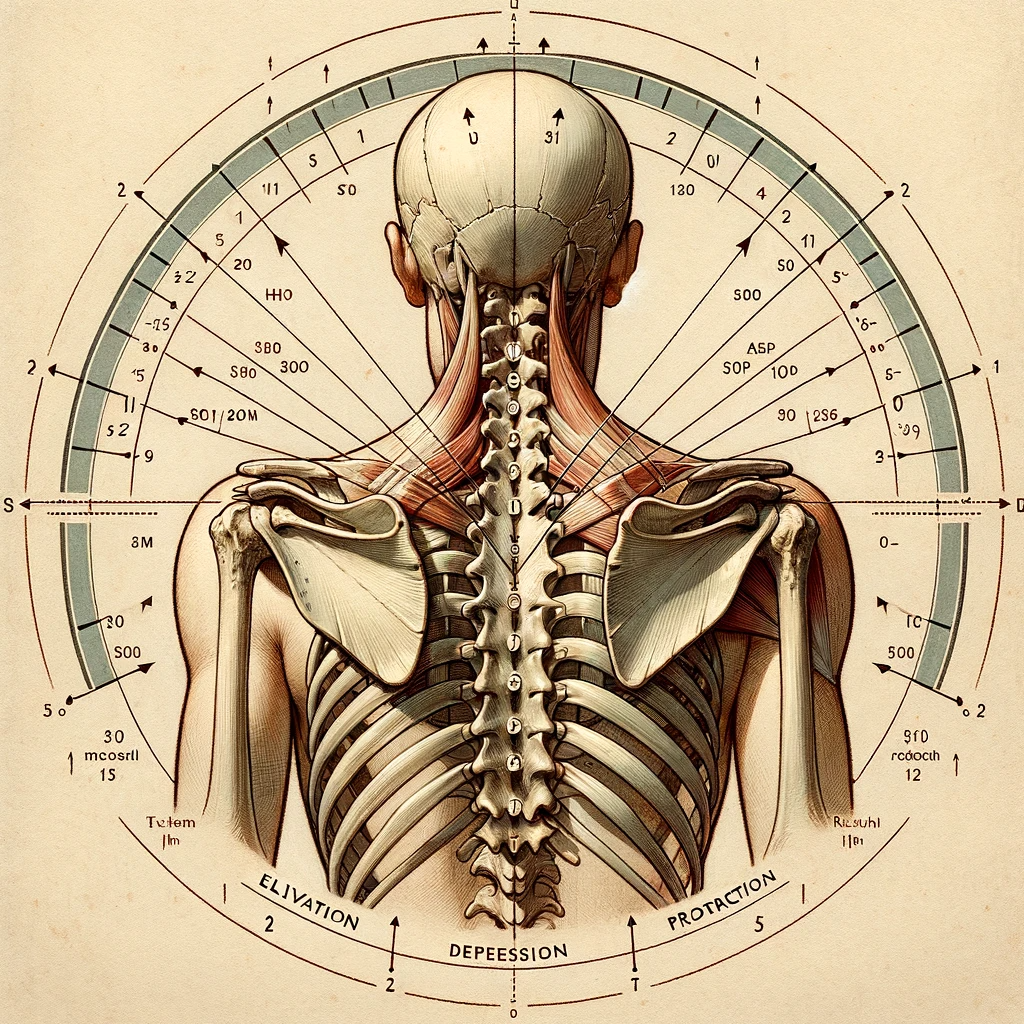The Scapula and shoulder pain.

“Exploring the Scapula’s Role in Shoulder Pain: A Deep Dive into Relational Anatomy“
Welcome to our exploration of the scapula and its pivotal role in shoulder pain, framed through the lens of relational anatomy.
The scapula, or shoulder blade, is a central hub for numerous muscles, including the rotator cuff group and the trapezius. It’s fascinating how these muscles, while individually distinct, work in concert to facilitate shoulder movements. This interconnectivity exemplifies relational anatomy – understanding how different body parts influence each other.
For instance, the rotator cuff muscles, essential for shoulder stability, can cause pain when inflamed or torn. Similarly, the trapezius, which extends from the neck to the scapula, can contribute to shoulder and neck discomfort when strained.
Moreover, the scapula’s relationship with surrounding structures like the clavicle and humerus is crucial. Issues with these bones can directly impact scapular function, leading to pain and restricted movement.
In the context of shoulder pain, it’s not just about one muscle or bone; it’s about the intricate network they form. Overuse, injuries, or imbalances in one area can ripple through this network, manifesting as pain.
Understanding relational anatomy provides us with a comprehensive view of how to approach shoulder pain. It’s not enough to treat just the symptom; we must consider the entire functional unit to effectively address the root cause.
This holistic view is essential for anyone dealing with shoulder issues. By appreciating the complex interplay of the scapula and its connected structures, we can develop more effective treatment and prevention strategies for shoulder pain.
If you read our last blog on the clavicle, you will now start to understand the importance of working the links between the bones, better known as joints. One such important link in dealing with shoulder pain is the A/C joint.

THE AC joint and Shoulder Pain.
The acromioclavicular (AC) joint, a critical component in the complex mechanics of the shoulder, presents a unique blend of histology, anatomy, and biomechanics. Histologically, the joint is characterized by fibrocartilaginous articular surfaces, lined with hyaline cartilage, and is supported by the acromioclavicular ligament, contributing to its strength and flexibility.
Anatomically, the AC joint forms the connection between the acromion (a bony projection off the scapula) and the clavicle (collarbone). This positioning is vital for the upper limb’s range of motion, facilitating movements in various planes.
Biomechanically, the AC joint allows for the transmission of forces from the upper limb to the axial skeleton. It accommodates a range of movements, including elevation, depression, protraction, retraction, and rotation of the scapula. This adaptability is crucial for activities that require overhead or across-the-body movements.
The AC joint’s health and function are paramount in maintaining shoulder stability and preventing pain. Understanding its intricate structure and function can provide insights into various shoulder pathologies and guide effective treatment strategies.
ELDOA and Shoulder Pain.
One of the most effective ways to improve a joint is to create space in the joint. One of the tools we use is the ELDOA for both the acromial and sternal ends of the clavicle. This helps to create better proprioception and awareness of the AC joint. When you have better awareness of your joints you can start to achieve not only better range of motion, but you can maintain what is call an Optimal Axis of Rotation (OAR),
An OAR, which is your ability to keep the joint centered greatly reducing wear and tear on the joint while improving its function. The ELDOA is one of many tools we use to help you take your joint pain from a place of pain, into a place of performance and longevity.


